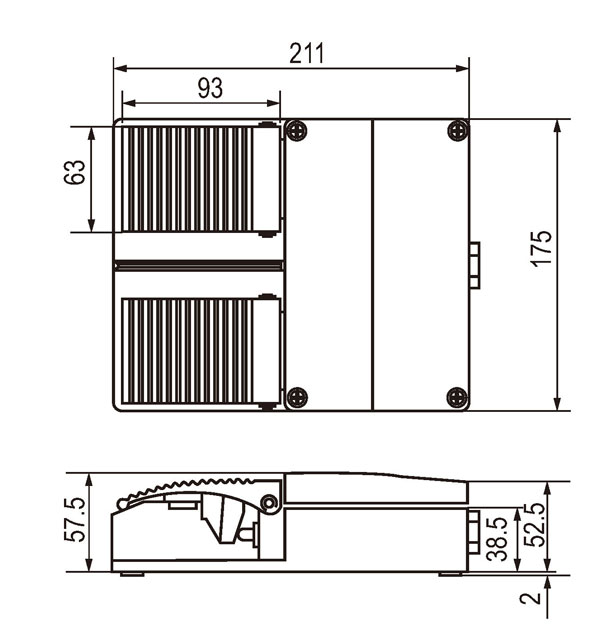
Regarding the technical specifications of the SFMS-10 aluminum housing foot switch, here are some key details:
These specifications ensure that the SFMS-10 is durable and safe for use in industrial environments. For specific details and additional specifications, refer to the detailed datasheet or product catalog provided by the manufacturer.
The SFMS-10 aluminum housing foot switch is designed for durability and safety in a variety of industrial applications. Here are some typical usage scenarios:
1. Machine Tools: To control the start, stop, and emergency stop functions of machinery such as press machines, shearing machines, and other heavy equipment .
2. Industrial Automation: For controlling automated processes where a reliable and sturdy switch is required .
3. Material Handling: To operate equipment such as forklifts, stackers, and conveyor systems in a hands-free manner .
4. Medical Equipment: In medical devices that require foot operation for hygiene purposes or to free up the user's hands .
5. Testing Equipment: For controlling the operation of testing machines where a heavy-duty and precise switch is needed .
6. Safety Systems: As a part of safety systems in industrial environments to prevent accidents .
7. Construction Machinery: To control the functions of machinery such as excavators and loaders .
8. Food and Beverage Industry: For controlling processing equipment that requires frequent operation .
9. Chemical Industry: To control the flow of chemicals and other hazardous materials safely .
10. Pharmaceutical Industry: For controlling machinery in clean rooms and other environments where hygiene is critical .
The SFMS-10's aluminum housing provides robustness against harsh conditions, and its full protective cover ensures safe operation in industrial settings .

The SFMS-10 aluminum housing foot switch typically operates on a simple but effective principle that involves mechanical pressure to activate an electrical switch. Here's a general overview of the operation principle:
1. Mechanical Pressure: The foot switch is designed to be activated by applying pressure with a foot. When the operator steps on the switch, they are physically pressing down on it.
2. Switch Activation: Under the pedal of the foot switch, there is a mechanism that, when depressed, completes an electrical circuit. This mechanism often includes a spring-loaded micro switch that is closed when pressure is applied.
3. Electrical Circuit: The foot switch is wired into an electrical circuit. When the switch is not activated, the circuit is open, and no current flows through it. When the switch is pressed, it closes the circuit, allowing current to flow.
4. Momentary Contact: Most foot switches, like the SFMS-10, are momentary contact switches. This means that the circuit is only complete, and the device is active, while pressure is being applied. Once the pressure is released, the switch opens again, breaking the circuit.
5. Safety Feature: The momentary contact type of switch is often used for safety purposes. It ensures that machinery will stop operating when the operator removes their foot from the switch, which is particularly useful in applications where quick stop is necessary.
6. IP Protection: The SFMS-10 has an IP50 rating, which means it is protected against dust and water jets from any angle. This protection ensures that the switch can be used in various environments without the risk of damage from dirt or moisture.
7. Durability: The aluminum housing of the SFMS-10 is designed to withstand heavy-duty use, making it suitable for industrial environments where the switch may be subjected to frequent or heavy pressure.
The specific operation of the SFMS-10 may vary slightly depending on the manufacturer's design, but the general principle of a foot switch involves using mechanical pressure to control an electrical circuit.
GET A QUOTE